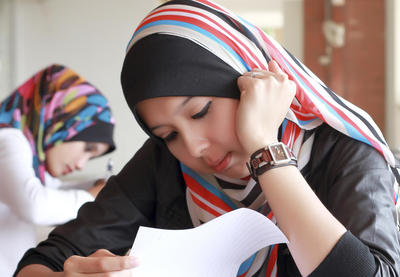Say it with me: "LGBTQ Muslims exist." Say it again: "LGBTQ Muslims exist."
I know it may sound flippant to start a post with this seemingly obvious statement, but members of our citizenry have a hard time grappling with the fact that "Muslim" and "LGBTQ" are not dichotomous identities. This misunderstanding has been amplified in the wake of the mass shooting at Pulse, a gay club in Orlando. The rhetoric some people use has pit LGBTQ people against Muslims at large, while ignoring the reality that many people occupy both identity groups.
In fact, Imam Daayiee Abdullah has emerged as the United States’ first openly gay imam. Broader conversations about Muslim identities and LGBTQ rights are ongoing, influenced by events such as the Obergefell decision and the Pulse tragedy. We need to have these conversations within our classrooms and our larger dialogue about schools and education. There is a growing call for an intersectional analysis to pedagogy, discipline and education policy. It's now time for educators to give more credence to the intersection between the identities of Muslim and LGBTQ.
Consider these classroom materials. Sara Farizan, a young adult author, provides two powerful texts for exploring the voices of LGBTQ Muslims in her novels, Tell Me Again How a Crush Should Feel and If You Could Be Mine. Both novels would make powerful additions to any secondary library as they deal with issues of family, religion, sexual orientation, gender expression and cultural and gendered expectations. I use both books in literature circles in my ninth-grade English class and have found that students consistently rank the texts as their favorites at the end of the year.
In addition to selecting intersectional texts, teachers can create units on LGBTQ rights movements from around the world, such as the annual pride parade in Istanbul, within any world cultures class. Documentaries such as the acclaimed Jihad for Love and A Sinner in Mecca are powerful tools for high school teachers to incorporate into their curricula. Faisal Alam’s important lecture, “Hidden Voices: The Lives of LGBT Muslims,” is informative and moving.
These are just a few examples. At a minimum, teachers should ask themselves: Am I allowing for a diverse representation when Muslim stories are in the curriculum? Am I perpetuating a single story of what it means to be LGBTQ?
Remember, we send an equally powerful message with what we include in our curricula as well as what we exclude. Not discussing the reality of LGBTQ Muslims is just as much of a political move as including the voices of LGBTQ Muslims. We all want our students to be empathic and critical thinkers. By including the voices of all people and teaching about intersectionality, we support our students’ abilities to grow as people and cultivate kindness.
Miller teaches ninth-grade English Language Arts at P.K. Yonge Developmental Research School, the University of Florida’s affiliated K-12 laboratory school. He is also a recipient of the 2016 Teaching Tolerance Award for Excellence in Teaching.
